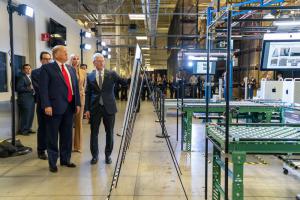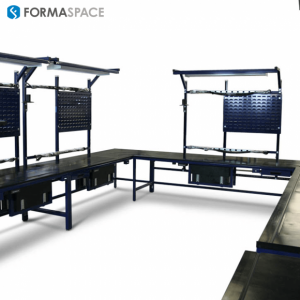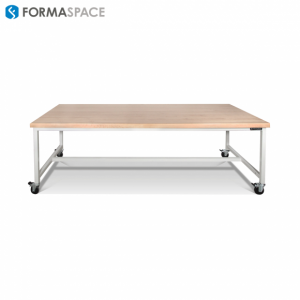The Outlook for American Manufacturing in 2020: Three Scenarios
Manufacturing growth across the country has been uneven in '19, and the outlook for '20 is still uncertain. View 3 possible scenarios waiting for us in 2020.
AUSTIN, TEXAS, USA, December 18, 2019 /EINPresswire.com/ -- President Trump’s recent visit to the Apple computer factory in Austin, Texas, highlights the resurgence of manufacturing in this region. However, manufacturing growth across the country has been uneven in 2019, and the outlook for 2020 is still uncertain. We consider three possible scenarios for US manufacturing in the coming year.As we approach the 2020 presidential election year, the White House is stepping up its efforts to showcase a resurgence in American manufacturing.
This past July, American manufacturers were invited to the White House to showcase their ‘made-in-American’ products at the third annual 2019 Made in America Product Showcase.
And President Trump has been traveling on the road across the US, touting the administration’s progress in attracting new American manufacturing jobs.
In November, Trump met up with Apple CEO Tim Cook in North Austin (not far from Formaspace’s own factory headquarters) to tour the Flextronics International manufacturing facility, which manufactures the new line of Apple Mac Pro computers.
The White House has reasons to celebrate, but also has reasons for concern. After years of US manufacturing growth, some warning signs have appeared on the horizon. A strike against GM in October helped push down manufacturing indexes to levels not seen since the Great Recession.
But it’s been an uneven slowdown: manufacturing growth in central Texas remains steady but the upper Midwest is showing greater signs of manufacturing industry weakness.
Unfortunately, one of the key future economic indicators, the PMI (Purchasing Managers Index), has been drifting downward below 50% over the last two quarters, which means we may be skirting with a mild regional recession in manufacturing going into 2020. Manufacturing PMI fell to 47.8% and remained below fifty percent again in November (48.1%).
Manufacturing Outlook For The Year 2020: Three Possible Scenarios
As we enter the highly charged politics of a presidential election year, what can the manufacturing industry expect?
We look at three possible scenarios.
Scenario 1: Kick The Can Down The Road
What if nothing changes significantly over the following twelve months? Unfortunately, that would mean continued uncertainty for American manufacturing. That’s our prediction for Scenario 1, and to be frank, staying put with the status quo is not terribly good news.
A recent Financial Times opinion piece argues that “trade tensions are strangling American manufacturing.”
Strangling may be too harsh a word, but many manufacturers have experienced cases of repeated whiplash, as the White House has announced (often via early morning tweets) a series of repeated threats against the NAFTA free trade agreement between the US, Canada, and Mexico, as well as a series of tariff threats (and actual tariffs) against Chinese imports, imported steel products, as well as European cars and automotive components.
While the intent (e.g. supporting the growth of the American manufacturing) is laudable, it’s been a tough period for Supply Chain managers forced to rebalance long-standing supply chains in response to new import tariffs. And many manufacturing sales managers have experienced significant heartburn as their sales to China have slowed down, often due to increased retaliatory “inspections” at the border.
Things had been pretty quiet (for a few months at least), but this past week, we’ve seen a renewed threat of on-again, off-again import tariffs. In a stunning volte-face, the White House announced this past week that steel products imported from Brazilian and Argentinian steel would once again face new tariffs (after having been introduced and then abandoned earlier). France was also singled out for $2.4 billion of new tariffs, in a reputedly retaliatory effort directed at their proposed tax on Internet company giants.
Bottom Line For Scenario 1: Continued Uncertainty And The Risk Of A Mild Manufacturing Recession
We recently spoke to the CFO of a medium-sized automotive component manufacturer in Michigan that makes aftermarket parts used to rebuild auto and truck engines. Tariffs on imported steel made a direct hit on their bottom line. After many months of waiting, they finally received a tariff exemption (as the steel used in their products is not made in the US), but they are still waiting for a refund on the tariffs they paid before the issuance of the waiver.
The increased cost and prolonged uncertainty (In early December, the President warned that a US-Chinese trade deal might not be resolved before the 2020 elections) is making it difficult for them to make concrete financial plans for 2020, a sentiment shared with other American manufacturing companies, such as a speaker manufacturer based in Minnesota.
As we all know, switching suppliers is expensive and time-consuming. Kicking the can down the road may prolong this uncertainty — as a result, we may experience a mild recession in certain regions/sectors. Meanwhile, the main beneficiary in the short term may be Vietnam as they hoover up factory production lines once based in China.
Scenario 2: New Trade Agreements Reached
In this scenario, things are looking up in early 2020.
Trade tensions cool down, and the trade threats against China, Europe, and other countries are taken off the table in exchange for some meaningful concessions.
In this scenario, Congress ratifies the revised NAFTA agreement, known as USMCA, in the coming months to ensure continued, stable economic relations with the two major economies on our doorstep.
And, despite the rancorous, heated rhetoric, there are some signs that a trade deal with China may happen sooner than later, even if it’s just an interim agreement.
Finally, the threat of tariffs against imported steel, European cars and parts, and French wine and cheese, is taken off the table. And a truce is called in the trade sanctions over unfair state-support for Airbus (per the 2019 WTO ruling) as well as Boeing (which the WTO is expected to rule against in 2020).
Bottom Line For Scenario 2: Once-In-A-Generation Opportunity For Renewed Growth
Resolving our ongoing trade disputes in exchange for meaningful concessions would help American manufacturing regain the certainty necessary for increased investment and growth.
Read more ... https://formaspace.com/articles/manufacturing/american-manufacturing-in-2020/?utm_source=einpresswire&utm_medium=content&utm_campaign=article-121119
Mehmet Atesoglu
Formaspace
+5122792792
email us here
Legal Disclaimer:
EIN Presswire provides this news content "as is" without warranty of any kind. We do not accept any responsibility or liability for the accuracy, content, images, videos, licenses, completeness, legality, or reliability of the information contained in this article. If you have any complaints or copyright issues related to this article, kindly contact the author above.





